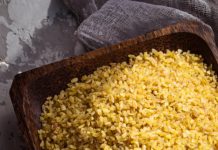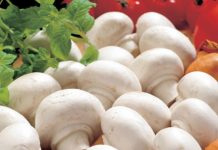In order for the yeast-free baking to turn out to be tender and lush, the culinary specialists use slaked soda in the recipe, which is an analog of a conventional baking powder. When interacting with the test, this chemical compound emits carbon dioxide, so that the finished product acquires the necessary porous structure. Those who don’t know how to quench soda with vinegar will benefit from our article, which describes the main subtleties of using this component.
Material Content:
Why extinguish baking soda with vinegar
For the preparation of friable shortcrust pastry, pizza, as well as various puff pastries, cooks use exclusively yeast-free dough. In case of improper kneading without adding baking powder, the finished dish can turn out to be “squat” and tasteless.
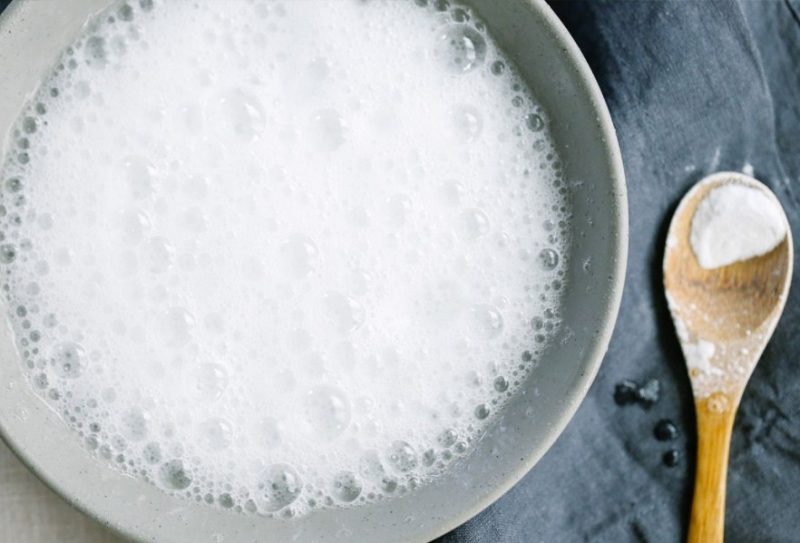
The carbon dioxide generated by combining the dough with yeast dilutes the dense baking texture, making it more airy. To achieve a similar result in an off-road formulation, you must add slaked soda, which acts like a yeast or baking powder.
When combined with vinegar, soda releases very small gas bubbles. Thanks to this interaction, the hostess gets airy porous pastries with incredible taste.

Theoretically, soda, even without a quenching reaction, can give the dough the necessary porosity, but added undiluted, it causes an unpleasant taste in the finished dish.This is because without an acidic environment, even at high temperature, the reaction is not complete, and the released carbon dioxide is not enough to give the baking necessary friability.
What vinegar is needed to quench soda
Novice cooks quite often ask themselves how to use vinegar to extinguish soda, so that the finished baking turns out to be soft and crumbly. Experienced chefs advise using any vinegar to loosen the dough.

For cooking, it is recommended to choose not only a table, but also an apple or wine product. The main objective of the component is to give the medium sufficient acidity at which a full-fledged chemical reaction will occur with the formation of tiny gas bubbles.
In addition to vinegar, it is also used:
- boiling water;
- lemon juice or acid;
- dairy products.
How to extinguish soda with vinegar: step by step instructions
If the dough is prepared using kefir or sour cream, it is absolutely not necessary to extinguish soda powder with the help of essence. It is enough to add quite a bit of soda, so that in the process of interaction of the powder with an alkaline medium, a complete reaction occurs.
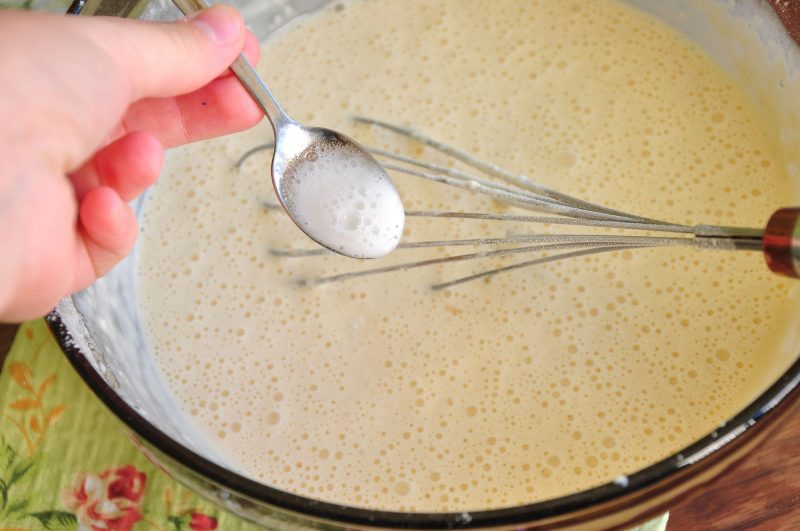
Note to the hostess: use as much powder as indicated in the recipe for cooking. Otherwise, the lack or excessive amount of the component in the alkaline medium may not give the proper effect of loosening.
Still don’t know how to extinguish baking soda with vinegar? Follow the instructions below and delight the household with delicate pastry that melts in your mouth.
The most effective way:
- In a container, combine all the liquid ingredients to knead the dough.
- Next, add a pinch of soda to the mixture, then pour a couple of drops of vinegar essence. Gently mix all components until smooth.
- After the quenching reaction occurs, add the remaining flour and mix thoroughly the resulting mass again.
The classic method:
- Dry products included in the recipe, combine with powder.
- Whisk all the liquid ingredients separately, then pour a couple drops of vinegar into the mixture.
- Next, mix the dry ingredients with the resulting liquid mass. As a result, in the process of kneading the dough, carbon dioxide is formed, giving the mass the necessary porous texture.
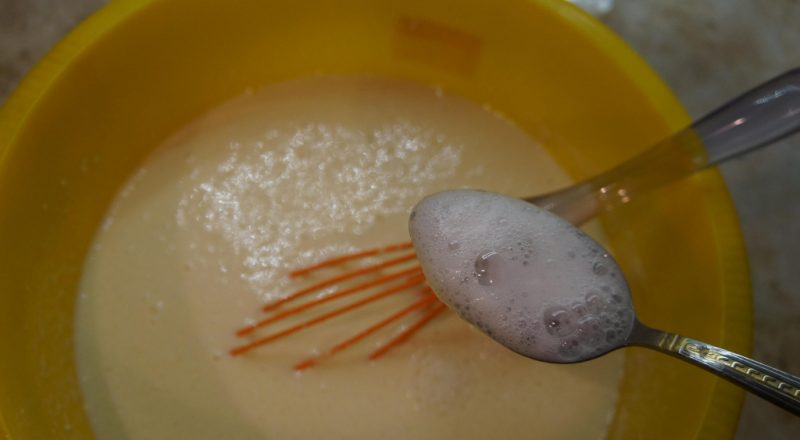
Ineffective way:
Soda powder is separately diluted with vinegar, and then the foaming mixture is poured into the dough. This method is considered less effective, since the bulk of the carbon dioxide formed evaporates at the kneading stage.
Often, housewives add products “by eye”. Gas bubbles form much later when the alkali reacts with sodium bicarbonate under the influence of high temperature.
If the required amount of components is not indicated in the formulation, then soda powder and acetic acid are used in proportions of 2: 1.
Is it possible and how to extinguish soda with apple, 70 percent, balsamic vinegar
For cooking, it is recommended to choose apple or 9 percent vinegar. But often in housewives in the house you can find only 70 percent essence, which is characterized by increased concentration and in the wrong dosage can harm the human body.
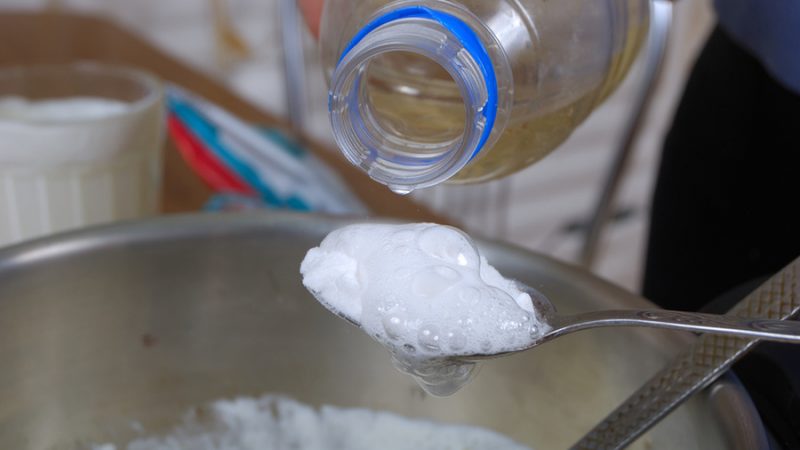
To avoid negative consequences, before using vinegar, its concentration must be reduced with water (combine 1 tsp. Vinegar and 7 tsp. Water).
As for balsamic vinegar, culinary experts do not recommend using the product to extinguish soda.
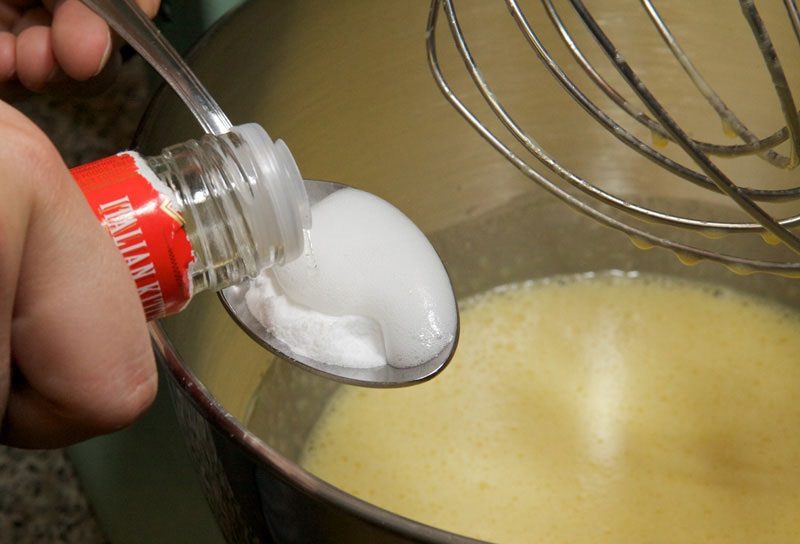
Under the influence of high temperature, the essence loses its taste, therefore, it is best to use such vinegar in its pure form for dressing various salads. Each hostess decides for herself whether it is worth adding balsamic to baking in order to give her the necessary friability. For 4 tsp vinegar is used 1 tsp. soda.
What to do if there is no vinegar at home
A full-fledged chemical reaction will occur only if an alkaline environment is created that promotes the formation of tiny bubbles. In addition to vinegar, freshly squeezed lemon juice or ordinary citric acid is also suitable. To 250 g of flour use 1 tsp. soda and 9 tsp acids. Recently, cooks use boiling water with which soda is poured.
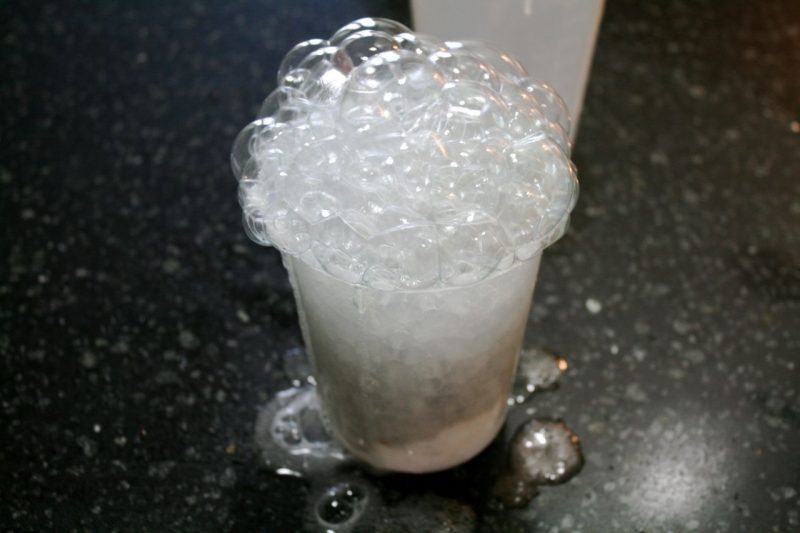
If the recipe involves the addition of fermented milk products, then instead of vinegar, put yogurt, kefir, sour cream or yogurt in the dough. In some cases, citrus fruit juice or regular honey is used.



